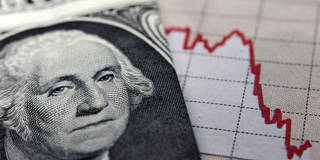In 2022, a confluence of shocks reduced economic growth and simultaneously boosted inflation, causing investors to flee to dollar-denominated assets. Now, as fears about inflation and monetary policy begin to abate, the dollar should start to depreciate, adding a bright spot to the global growth outlook.
LONDON – Investors typically view the US dollar’s exchange rate through a Federal Reserve-centric lens. Yet while the Fed’s aggressive rate-hiking cycle clearly worked in the dollar’s favor last year, the greenback owed its hyperbolic 25% appreciation primarily to inflation and geopolitical shocks. Hence, as fears of inflation and uncontained military conflict have abated, the dollar has begun to weaken, offering much-needed financial relief to emerging-market economies and reducing pressure on other central banks to tighten policy.

LONDON – Investors typically view the US dollar’s exchange rate through a Federal Reserve-centric lens. Yet while the Fed’s aggressive rate-hiking cycle clearly worked in the dollar’s favor last year, the greenback owed its hyperbolic 25% appreciation primarily to inflation and geopolitical shocks. Hence, as fears of inflation and uncontained military conflict have abated, the dollar has begun to weaken, offering much-needed financial relief to emerging-market economies and reducing pressure on other central banks to tighten policy.